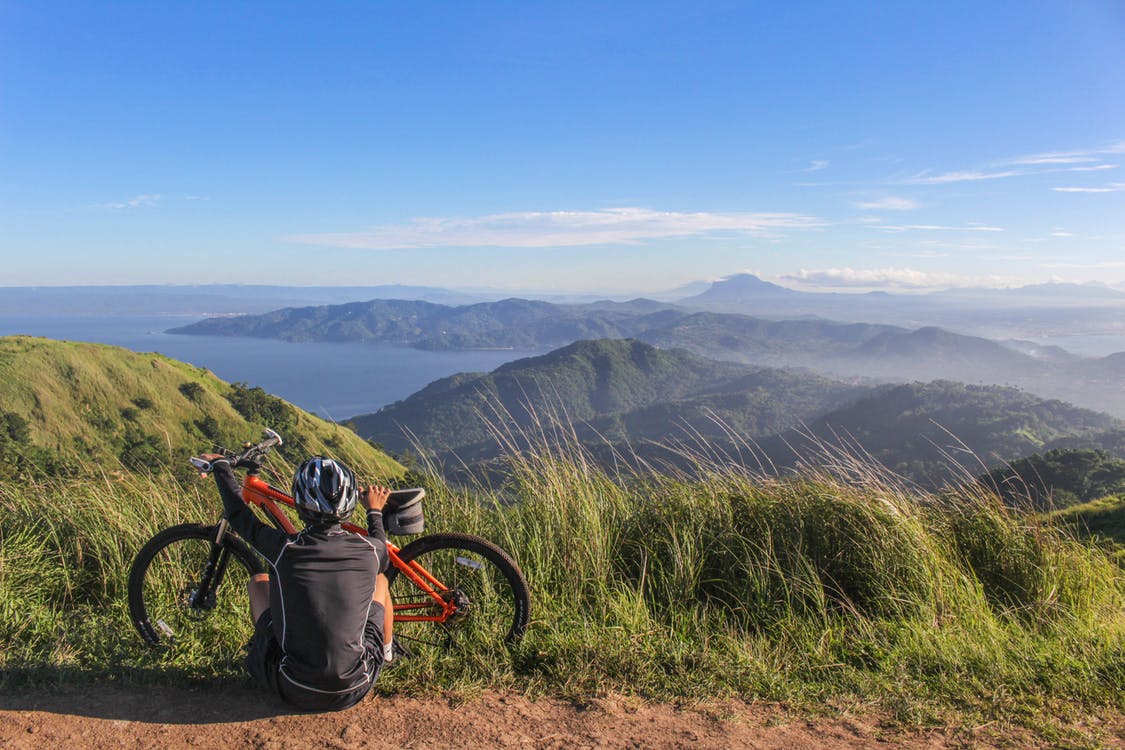Master your campus commute or take to the trails with this how-to guide for new cyclists

Photo by Dó Castle via Pexels.
With UVic’s BikeHub reopening this summer and parking fees at an all-time high, it’s never been a better time to get around Victoria on two wheels. The saying goes, “it’s just like riding a bike,” but for first-time riders or those getting back in the saddle after a long break, cycling can seem anything but simple.
We’ve compiled this guide for choosing the right bike, what equipment you need, and what to wear for a smooth ride to campus this September.
A used bike is a great choice, saving you cash and a bike from the landfill in the process. Some places to search are specialist bicycle shops, garage sales, online marketplaces such as Facebook, and even some thrift stores. Look for a hybrid model — these beginner-friendly bikes combine the speed and light weight of a road bike with the suspension and comfort of a mountain bike. They are versatile and suitable for roads and most trails.
To find out which size you need, a quick google search brings up sizing guides by height or inside leg measurement. As different manufacturers, makes, and models vary, it’s best to shop around and sit on a few bicycles to see what works for you. You should be able to reach the floor with both feet while sitting in the saddle, but not completely flat-footed. (Think tiptoes, like a ballerina) Keep a slight bend in your elbows when reaching for the handlebars. If you have to straighten your arms or strain to reach, it’s likely the frame is too big for your body.
Sometimes we are blinded by a bargain! Minor scrapes and scratches can be expected when it comes to buying pre-loved bikes but check the frame tubes for cracks or dents as these red flags could indicate more serious damage. Before you go anywhere, take your new wheels to a cycle shop or the UVic BikeHub for a maintenance check and tune-up. For a fee, a professional can look over major components such as brakes, chains, and pedals to ensure your bike is ready to ride.
Be sure to check any bike you find from a non-official seller or road side against the police department’s registry: 529 Garage. You can use their service to search for the make, model and/or location and reunite the bicycle with its owner if it was reported stolen. It’s also free to register your own bike with this service, making it quicker and easier to report any loss or theft to Victoria PD.
For the commitment-phobes among us, renting is a great compromise. Several bicycle stores in Victoria offer short-term loans, including Cycle BC (Humboldt Street), Oak Bay Bicycles (Oak Bay Avenue), and The Pedaler (Bellevue Avenue). If you’re looking to keep your ride throughout the semester, the UVic BikeHub program loans used bikes that have been refurbished by their team for one or more terms.
There are a plethora of extra gadgets, tools and knick-knacks available to riders, which can leave even the most seasoned cyclist confused. Whether you plan to ride on or off-road, helmets are the number one accessory and a legal requirement in B.C. You will also need a front white light and a red rear reflector or light. Always check that your lights or reflectors aren’t obstructed by any equipment or bags before you set off.
Other essentials for your kit should include a sturdy u-lock, portable bike pump, a patch kit for emergency punctures, cable ties to tighten up loose parts on-the-go, electrical tape for wheel tears, and a spare inner tube for bigger punctures. Don’t forget to bring plenty of water and a carbohydrate-rich snack such as an apple or a granola bar.
You don’t have to wear a full lycra bodysuit (unless you want to), and can opt for fitted and comfortable clothing such as shorts or leggings in a moisture-wicking fabric. If you plan to go for long rides, you can also invest in bottoms with an extra padded lining, known as a “chamois” for comfort around the inner thighs and groin. A light rain jacket that is small enough to roll up in your pack is also a great option, especially in Victoria! Clothing with bright colors or reflective strips will also help improve your visibility to vehicles.
Now you’re ready to hit Victoria’s beautiful trails or glide up to campus with confidence and ease.
Further resources include the BikeSense Guide to brush up on best practices and safety tips, and the Capital Regional District’s Cycle Map to plan your next route.








